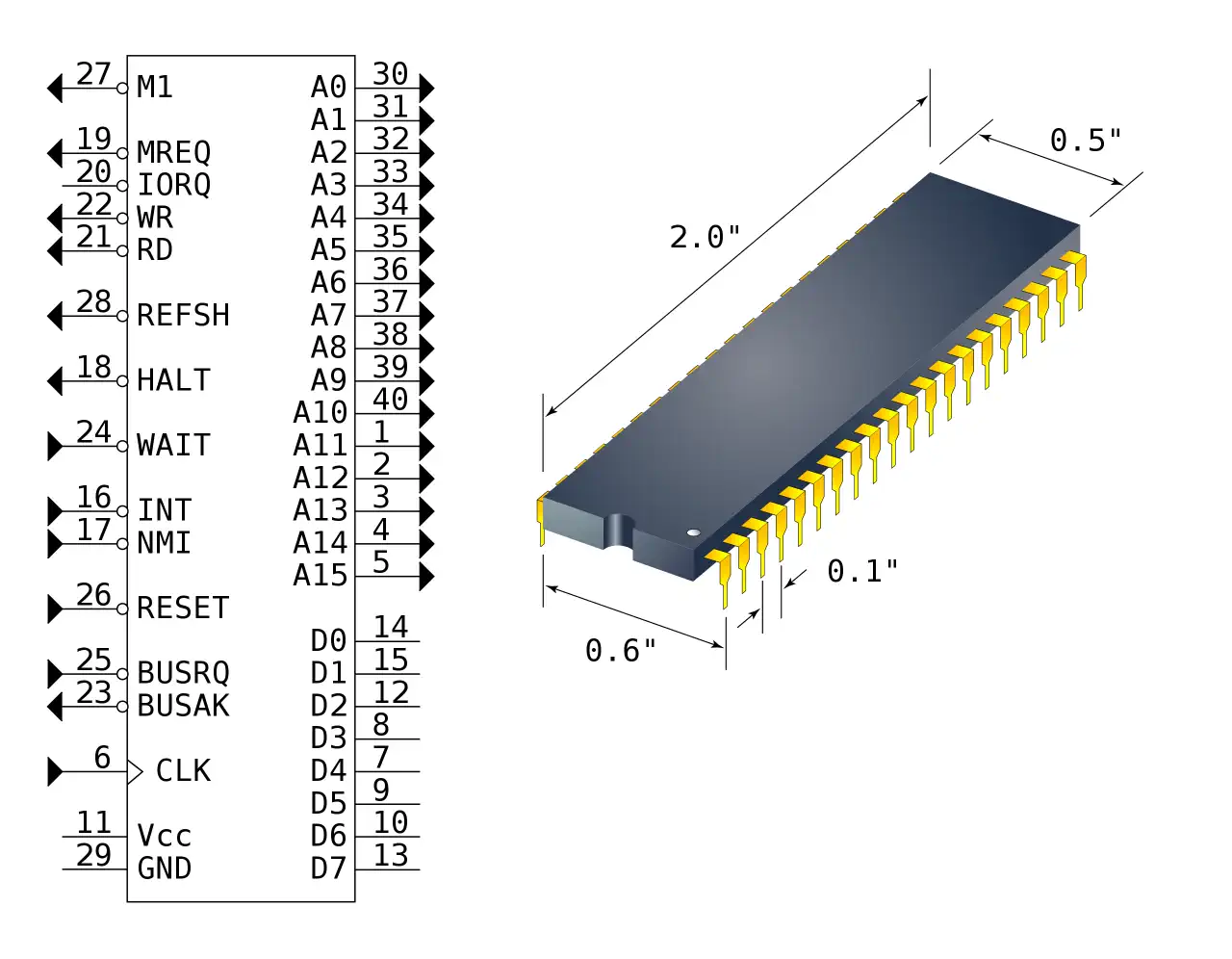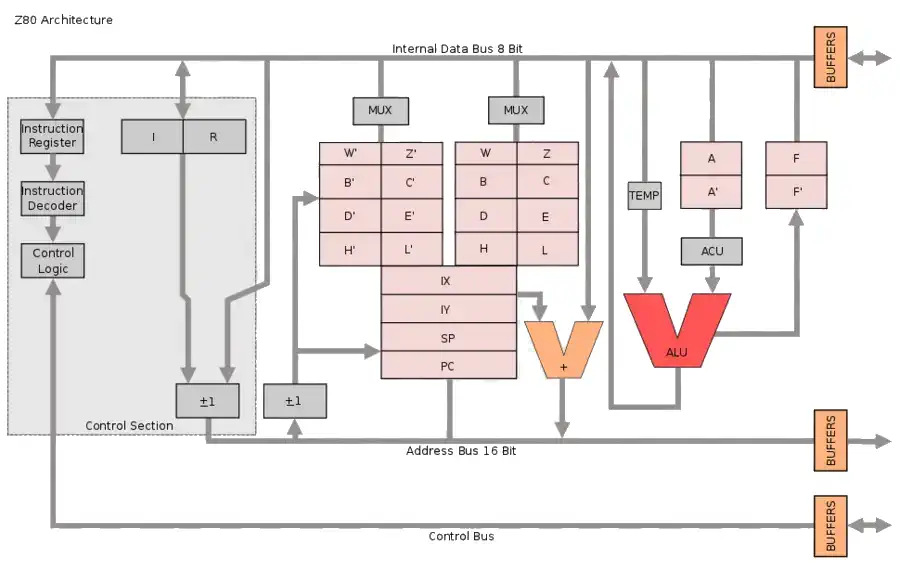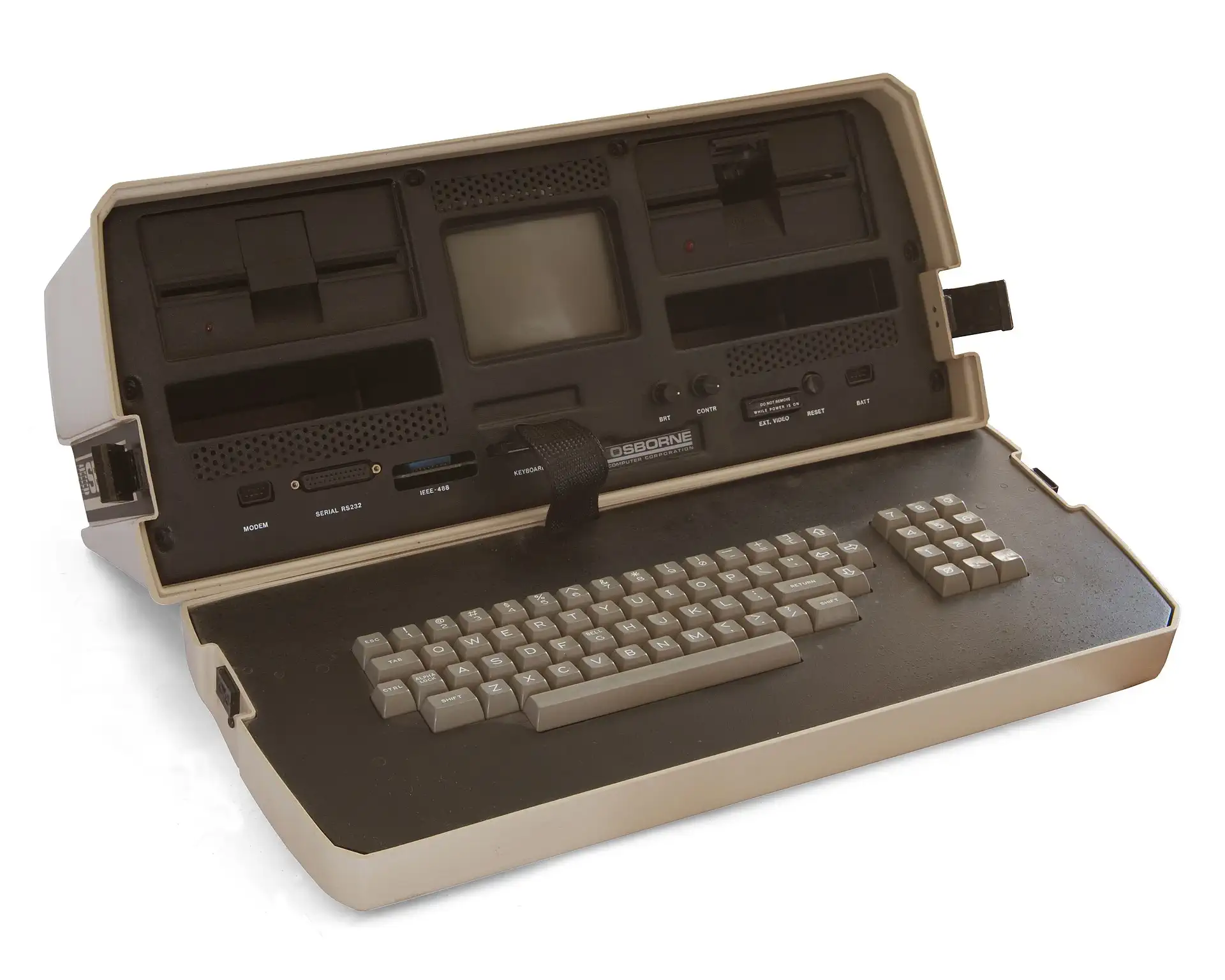Osborne 1
The Osborne 1 the first commercially successful portable computer released by the Osborne Computer Corporation on April 3rd, 1981.
The Osborne 1 runs the CP/M 2.22 operating system on the Z80 processor. The machine came bundled with the Wordstar word processor, the SuperCalc spreadsheet and CBasic and MBasic as programming languages.
The Osborne 1 came with 64K of main memory, provided by four rows of eight 4116 DRAM chips. 4K of memory is reserved for Video. There is a 4KByte bank-switched EPROM that provides the Boot-Loader and the BIOS for the machine. A second EPROM provides the character generator, providing 96 upper and lower case characters, and 32 graphic symbols. The eight bit of the character ASCII code is used as underline attribute.
Serial communication is provided by a memory-mapped Motorola MC6850 Asynchronous Communications Interface Adapter (ACIA) and can be set via a jumper to 300/1200 or 600/2400 baud communications.
The computer is equiped with two Siemens 100-5, 5.25", single-sided, single-density floppy disk drives interfaced through a Fujitsu 8877 disk controller IC. The parallel port is connected through a memory-mapped motorola MC6821 Peripheral Interface Adapter (PIA) which allows the port to be fully bidirectional. The printer-port implements the IEEE-488 interface bus, but this feature is not really used.
The video is provided by TTL logic and displayed on an internal 5" monochrome monitor, with an actual viewing size of 4.42". Osborne also provided a 12" external monitor.
The computer was equipped with the following ports:
- IEEE-488 port, configurable as parallel printer port.
- Two RS-232 serial ports.
- A composite video monitor connector
CPU View - Zilog Z80 Family
The Z80 quickly became popular in the personal computer market, with many early personal computers, such as the TRS-80 and Sinclair ZX80, using the Z80 as their central processing unit (CPU). It was also widely used in home computers, such as the MSX range, SORD, and the Amstrad CPC, as well as in many arcade games. Additionally, it was also used in other applications such as industrial control systems, and embedded systems. The Z80 was widely used until the mid-1980s, when it was gradually replaced by newer microprocessors such as the Intel 80286 and the Motorola 68000.
The Z80 microprocessor was developed by Zilog, a company founded by Federico Faggin in 1974. The Z80 was released in July 1976, as a successor to the Intel 8080. It was designed to be fully compatible with the 8080, but also included new features such as an improved instruction set, more powerful interrupts, and a more sophisticated memory management system.
The Z80 quickly became popular in the personal computer



